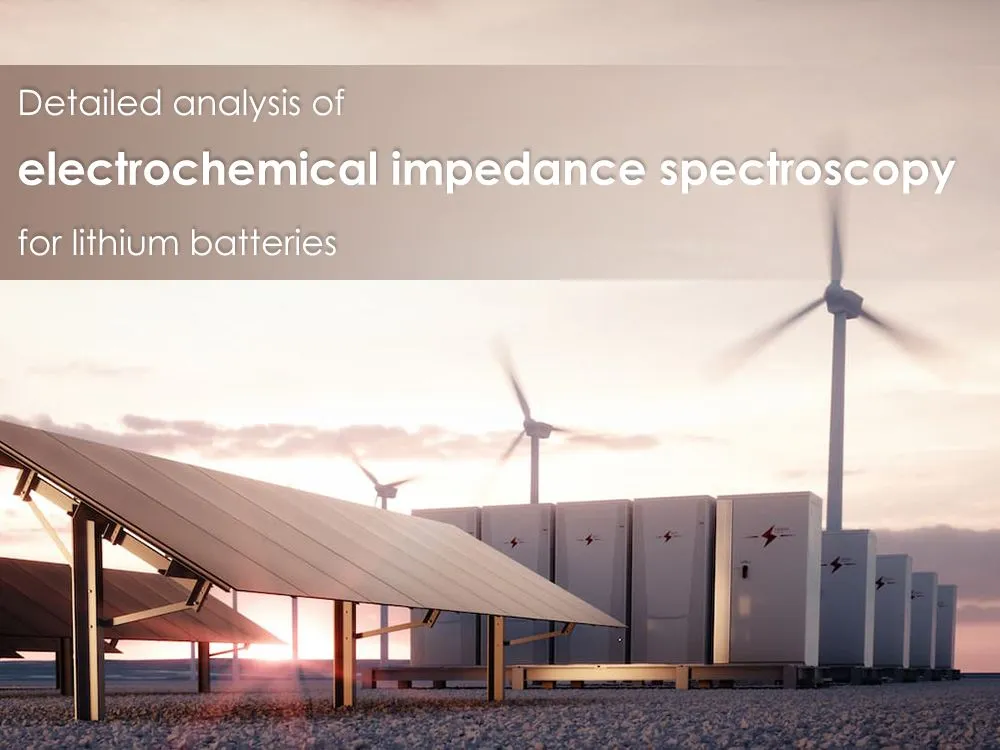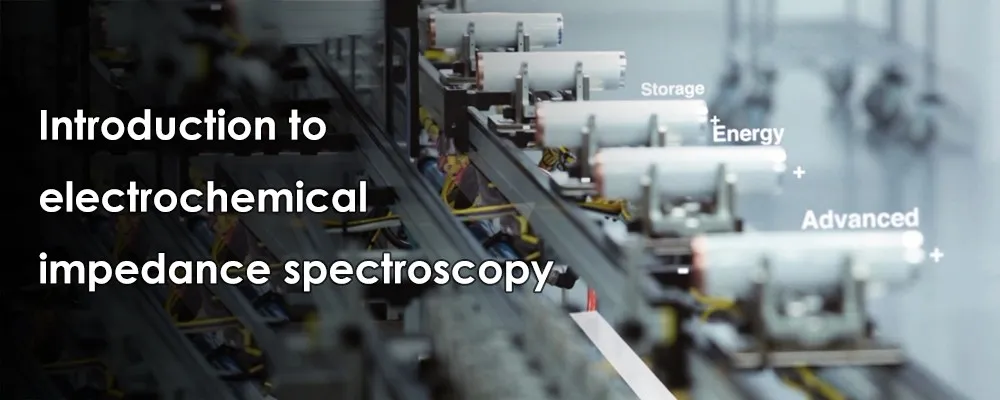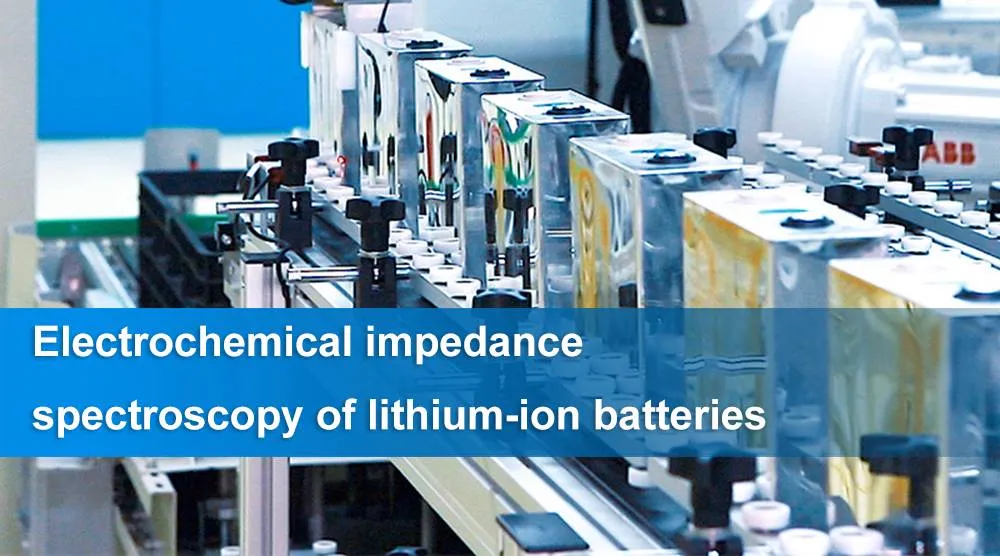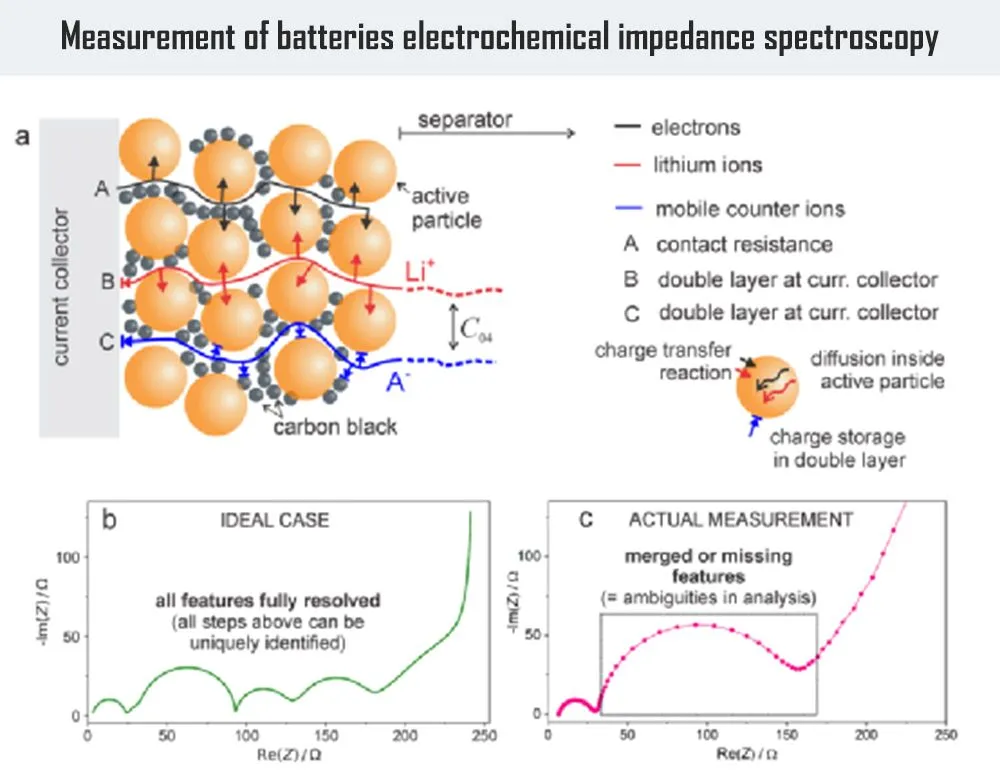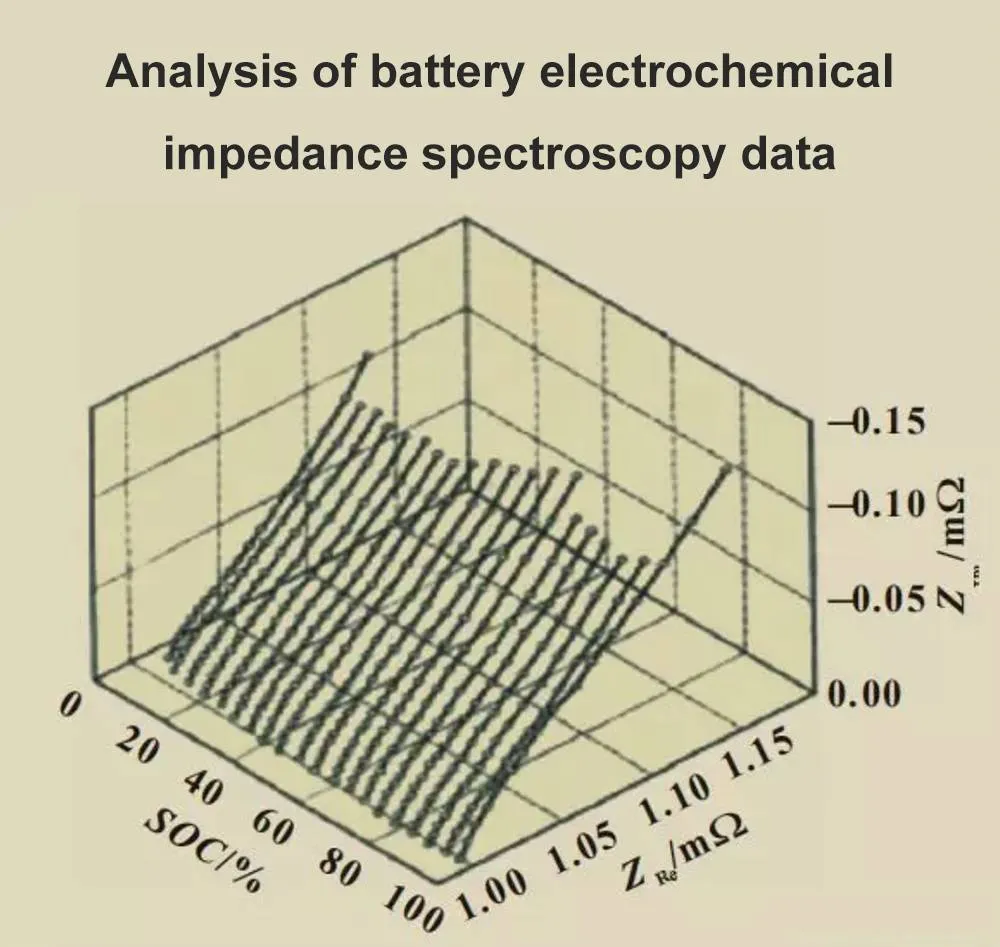Detailed analysis of electrochemical impedance spectroscopy for lithium batteries

Introduction to electrochemical impedance spectroscopy
Electrochemical impedance spectroscopy is a powerful technique for studying processes occurring in electrochemical systems. In general, such processes involve the dynamics of bound or moving charges in the bulk or interfacial regions of any liquid or solid material: ions, semiconductors, mixed electron-ions or even insulators.
The main advantage of electrochemical impedance spectroscopy is that it can effectively decompose complex electrochemical processes into a series of basic processes based on different relaxation times. However, the system must remain in a static state throughout the electrochemical impedance spectroscopy measurement.
Both of these features can be achieved by using small-amplitude periodic perturbations of potential or current to excite the electrochemical system at different frequencies. By measuring the system’s response to this disturbance, the corresponding transfer function, ie, the impedance of the system, can be calculated. Ideally, electrochemical impedance spectroscopy incorporates individual features of each fundamental process that makes up the overall electrochemical mechanism.
Basic electrochemical impedance spectroscopy measurements of a typical electrochemical energy storage cell, where the entire system is probed between the two battery electrodes, may yield a spectrum in which the reactions occurring at the cathode and anode are observed as separate features . More detailed electrochemical impedance spectroscopy studies of a given cell may help identify other fundamental processes.
Electrochemical impedance spectroscopy of lithium-ion batteries
Lithium-ion batteries have been intensively and continuously researched. However, the detailed nature of the specific mechanisms, such as the charge/discharge rate or the effect of prolonged battery cycling on energy and power storage performance, is still not fully understood.
These aspects are critical and strongly affect the lifetime and cost of Li-ion batteries and must be implemented to improve the overall quality of Li-ion battery devices. In this regard, electrochemical impedance spectroscopy can be considered as a useful technique that can generate insights that can help solve unresolved Li-ion battery problems.
Electrochemical impedance spectroscopy is not often used in lithium battery research. Furthermore, the vast majority of these articles treat electrochemical impedance spectroscopy as an auxiliary technique, mainly to confirm trends already found by conventional electrochemical measurements. To some extent, the application of electrochemical impedance spectroscopy to the field of batteries can be well understood.
Modern electrochemical impedance spectroscopy equipment allows rapid data acquisition, while their interpretation is easy using automated algorithms, most commonly equivalent circuit analysis. This article will present several examples of advanced measurement methods for electrochemical impedance spectroscopy of Li-ion battery systems, along with state-of-the-art modeling tools for in-depth interpretation of the measured data.
Measurement of batteries electrochemical impedance spectroscopy
The lithium battery performance is usually evaluated using full cells consisting of two different cathode and anode. Most commonly, the same two-electrode full cell is also used for electrochemical impedance spectroscopy measurements.
However, full cells contain many fundamental processes originating at each electrode, and despite the inherent resolution of electrochemical impedance spectroscopy, it is very difficult to correctly deconstruct these processes from a single measured spectrum. Even with symmetrical or three-electrode cells, the number of fundamental processes taking place in the cell can still be high, often involving:
● Electrons are transferred from the current collector to the electrode complex,
● Electron conduction/migration through the composite electrode thickness,
● Ions migrate through the electrode thickness,
● Electrochemical intercalation of ions and electrons into active storage particles,
● Double-layer charging at the solid/liquid interface,
● Coupled diffusion of active and inactive ions in porous electrode composites,
● Coupling diffusion of ions and electrons within active storage particles,
● Migration and diffusion of ions in the isolation membrane.
In fact, in an ideal situation, electrochemical impedance spectroscopy would be able to detect more or less all of these processes separately, as separate features of a single measured spectrum. To be precise: ideally, the number of features measured is only one less than the number of individual processes, demonstrating the ability of electrochemical impedance spectroscopy to divide complex processes into elementary steps.
In real-world measurements, many of these individual features overlap, and it is quite difficult to unambiguously decouple them. This aspect is critical and must be carefully considered in order to fully utilize electrochemical impedance spectroscopy in the field of battery research. Over the past decade, scientists have proposed several experimental approaches to efficiently decouple the merged parts of the electrochemical impedance spectroscopy of lithium-ion batteries into individual features.
Analysis of battery electrochemical impedance spectroscopy data
Analysis of measured impedance data can be performed on several sophisticated levels.
The first, known as equivalent circuit analysis, dominates mainly in the field of batteries. This analysis relies on the fact that, in terms of impedance, the most frequent processes, such as the migration of charges through a phase and the accumulation of charges at phase boundaries, exhibit the same responses as ordinary macroscopic resistors and capacitors, respectively. Likewise, the diffusion of charge can also be represented by a specific electrical component.
Unlike equivalent circuit analysis, physics-based impedance spectroscopy methods rely on the application of general physical laws that describe mass and charge transport and electrochemical reactions in solid or liquid phases and their interfaces. A third physics-based approach has a long tradition in the field of electrochemical impedance spectroscopy and relies on the direct transcription of governing equations into circuit elements.
Summary and prospects
Electrochemical impedance spectroscopy is a powerful electrochemical technique that can resolve complex processes into their fundamental steps. However, in the field of batteries, the great potential of this technology has not been fully exploited.
This impedance-oriented experimental design may provide fundamental new insights into battery mechanisms if well-controlled impedance studies are combined with complementary techniques that provide information on the macrostructure, microstructure, and composition of the system under investigation .

